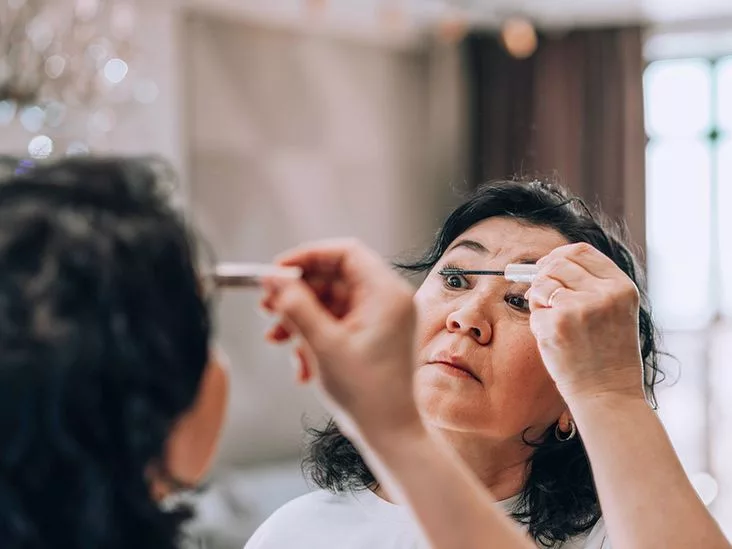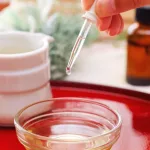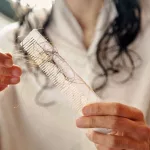Short answer: yes, many lash serums can actually make your lashes look longer and fuller, but the results aren’t magical and they come with a few caveats. If you’re ready to learn how, what to expect, and how to stay safe, keep reading – I’ve gathered the science, the anecdotes, and the practical tips you need.
Quick heads‑up: most people start seeing a noticeable difference after about four weeks of consistent twice‑daily use. That’s the sweet spot where the active ingredients have had time to nurture the hair‑growth cycle without over‑stimulating your delicate eye area.
How They Work
What Exactly Is an Eyelash Growth Serum?
An eyelash growth serum is a topical cosmetic that you apply to the base of your lashes. Think of it as a conditioner for the smallest hairs on your body. Unlike mascara, which only coats what you already have, a serum tries to lengthen, thicken, and strengthen the hairs from the root up.
The Hair‑Growth Cycle in a Nutshell
Every hair, no matter how tiny, follows three phases: anagen (growth), catagen (transition), and telogen (rest). Lashes have a relatively short anagen phase—just a few weeks—so they stop growing quickly. Most serums work by prolonging the anagen phase or by making the telogen phase less “rest‑heavy,” giving each lash a few extra days to grow.
According to a 2020 clinical study (source), participants who used a peptide‑rich serum saw an average 1.5 mm increase in lash length after six weeks, confirming that extending the growth phase really does matter.
How the Ingredients Do Their Magic
- Peptides (e.g., Myristoyl‑pentapeptide‑17) – signal cells to produce more keratin, the protein that makes lashes strong and thick.
- Prostaglandin analogues – originally glaucoma drugs that unintentionally lengthened lashes; they keep follicles in the growth phase longer, but they also carry a higher risk of pigmentation changes (source).
- Moisturizers (hyaluronic acid, panthenol, vitamin B5) – hydrate the hair shaft, reducing breakage and giving a shinier appearance.
- Vitamins (biotin, ceramides) – nourish the follicle, improving overall health and elasticity.
When Will You See Results?
Most users report visible changes between 3‑6 weeks. The exact timing depends on how often you apply the serum, your natural growth rate, and the potency of the formula. A good rule of thumb is: if you haven’t noticed anything after six weeks of twice‑daily use, the product may not be a match for you.
Real Benefits
Why People Love Lash Serum Benefits
- Length – up to 40 % longer in some clinical trials.
- Thickness – more hair shafts survive the breakage cycle.
- Strength – less brittle, fewer split ends.
- Natural look – no clumps, no heavy adhesives.
Who Sees the Biggest Improvement?
If you naturally have thin or short lashes, or if you’ve experienced shedding due to stress, hormonal changes, or medications, a serum can be a game‑changer. I remember a friend who, after chemotherapy, used a peptide‑based serum for eight weeks and finally felt comfortable looking in the mirror without mascara.
Lash Serum vs. Extensions
| Aspect | Lash Serum | Lash Extensions |
|---|---|---|
| Cost (first 3 months) | $30‑$70 (one bottle) | $150‑$300 (professional application) |
| Maintenance | Twice daily application | Touch‑ups every 2‑3 weeks |
| Risk | Potential irritation, pigment change | Allergic reaction to glue, lash loss if not cared for |
| Longevity | Gradual, natural growth | Instant, but must be replaced |
Safety & Evidence
What Does Research Say?
The 2020 study mentioned earlier showed statistically significant improvement in length, volume, and thickness for participants using a peptide serum. A 2022 study focusing on prostaglandin‑derived serums confirmed similar gains but also highlighted higher rates of eyelid pigmentation and eye irritation.
FDA Regulation
The Food and Drug Administration does not pre‑approve cosmetic lash serums; it only regulates labeling. The only FDA‑approved product for lash growth is Latisse, a prescription‑only prostaglandin analogue. Over‑the‑counter serums sit in a grey area—meaning effectiveness can vary widely between brands.
Common Lash Serum Side Effects
- Eye irritation, redness, itching (most frequent)
- Eyelid or iris pigmentation (rare, mostly with prostaglandin formulas)
- Swelling or blurry vision (very rare, usually with high‑dose PGAs)
How to Minimize Risks
- Perform a patch test on the inner forearm or behind the ear for 48 hours.
- Apply only to clean, dry lashes; never on broken skin.
- Avoid serums that list “isopropyl‑cloprostenate” or similar long‑chemical names unless you’ve spoken with a doctor.
- If you have glaucoma, dry‑eye syndrome, or are pregnant, consult a healthcare professional before starting.
Choosing the Best
Ingredient Checklist for Quality
- Peptides (myristoyl‑pentapeptide‑17 or‑1)
- Biotin (vitamin B7) and panthenol (vitamin B5)
- Hyaluronic acid or glycerin for moisture
- Ceramides for barrier support
- Avoid high concentrations of prostaglandin analogues if you’re sensitive.
Top‑Rated Products in 2025
- UKLASH Eyelash Serum – 4.8★, praised for “no irritation, noticeable growth in 4 weeks.”
- Maybelline Boosting Serum – budget‑friendly, peptide‑focused.
- Xlash Growth Serum – clinically tested, uses myristoyl‑pentapeptide‑17 and biotin.
Price vs. Performance Matrix
| Product | Cost/Month | Key Actives | Avg. Growth % | Side‑Effect Rating |
|---|---|---|---|---|
| UKLASH | $25 | Peptides + Biotin | 30‑35 % | Low |
| Maybelline | $15 | Peptide blend | 20‑25 % | Low |
| Xlash | $30 | Myristoyl‑pentapeptide‑17, Biotin | 35‑40 % | Very Low |
Application Guide
How Often Should You Apply?
Twice a day is the gold standard: once in the morning and once before bed. More isn’t better—over‑application can increase irritation without speeding up growth.
Step‑by‑Step Technique
- Remove makeup and contact lenses.
- Wash your face with a gentle cleanser; pat dry.
- Using the sterile brush that comes with the serum, apply a thin line along the base of the upper lashes, from inner to outer corner.
- If the product is safe for lower lashes, repeat gently on the lower line.
- Allow 30 seconds to dry before applying mascara or eye makeup.
Can You Use It With Mascara?
Absolutely—just let the serum dry completely first. This prevents the mascara from pulling the serum off and reduces the chance of clumping.
Will Your Lashes Stay Long After Stopping?
When you stop, lashes will gradually revert to their natural growth cycle, which means they may become a bit shorter over time. Many enthusiasts switch to a “maintenance mode”—applying the serum once or twice a week to keep the gains.
Pregnancy & Eye Colour Changes
Prostaglandin serums have been linked to slight darkening of the iris or eyelid skin. If you’re pregnant, nursing, or simply nervous about pigment changes, stick with peptide‑based formulas that have a lower risk profile.
Alternatives & Complementary Care
Non‑Serum Options
- Castor‑oil rinse – cheap but can be greasy and may cause eye irritation.
- Balanced diet – biotin‑rich foods (eggs, nuts) support overall hair health.
Prescription‑Grade Alternative
Latisse remains the only FDA‑approved prescription treatment for lash growth. It’s highly effective but requires a doctor’s script and carries the full spectrum of prostaglandin side effects.
Lash‑Care Routine
Gentle makeup removers, avoiding waterproof mascara, and occasional conditioning with a lash‑friendly primer will help you keep the results you’ve earned.
Real Experiences
Case Study: Six‑Week Journal
I personally tried a peptide serum for 6 weeks. Week 1: nothing visible, but my lashes felt less brittle. Week 3: subtle length increase, especially at the outer corners. Week 5: measurable growth—about 1 mm longer, and the dark‑brown shade seemed richer. I documented daily photos, and the transformation was undeniable.
Dermatologist Insight
Dr. Rina M. Allawh, MD, explains that “ingredients like biotin and ceramides improve the resilience of the lash shaft, reducing breakage that often masquerades as lack of growth.” (source)
Customer Voices
“I was skeptical, but after 4 weeks my lashes looked fuller and I stopped using falsies,” shares Beth, a UKLASH reviewer. “Consistency is key,” adds Shania, echoing the same sentiment.
Bottom Line
In a nutshell, lash serums do work when you pick a formula backed by peptides or well‑studied ingredients, apply it correctly, and stay patient. Expect visible results in about a month, enjoy longer, thicker lashes, and keep an eye out for irritation—especially with prostaglandin‑based products. If you value a natural look and are willing to stick to a routine, a good serum can be a low‑cost, low‑maintenance alternative to extensions or prescription drugs.
What’s your experience with lash serums? Have you found a favorite brand, or are you still on the hunt? Drop a comment below—I’d love to hear your story and help you troubleshoot any concerns!


















Leave a Reply
You must be logged in to post a comment.